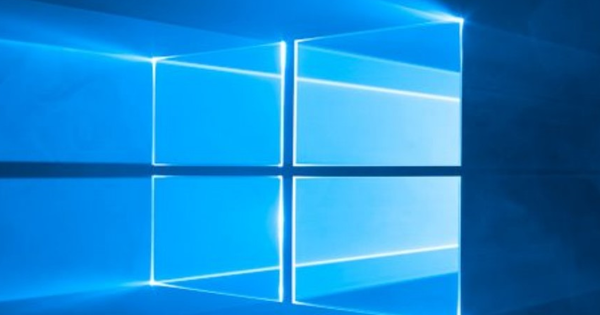If you've bought a Samsung Galaxy phone, you'll probably be annoyed by all the unnecessary apps that the company has already installed on your phone. And you can often not just remove these apps. Still, there are ways to get the apps off your phone.
Disable apps
01 Active apps
To see which apps are running, in Android settings, tap Application management. Then swipe to the list Active. These are all the apps currently running. If there's an app in this list that you don't think you need, it's wasting your smartphone's memory and processor time all the time. You can easily remove apps that you have installed yourself in the Play Store. Maybe you forgot you ever installed that app that you now find unnecessary?
02 Disable apps
However, a new smartphone or tablet already contains a lot of pre-installed apps that cannot be removed. Fortunately, at least you can prevent them from booting. To do so, press in the list Everything on the app that doesn't interest you. Where an app that you can remove has a button on the right remove state, the app info shows a button for these apps Turn of. With some apps, Android first asks to replace the app with the factory version. Then press OK. Tick too Show notifications If you don't want to see notifications about app updates anymore.
03 Be careful with system apps
Don't randomly disable or uninstall apps. An important maxim is: if you don't know what an app does, don't do it. This certainly applies to the 'green' apps: the apps that have a green Android icon in the application manager are system apps or system services that are crucial for the operation of Android. Often Android does not even allow you to disable them, but it is best not to just remove them (see how to do this safely from step 11).
04 Bloatware
You can get rid of the real bloatware without side effects. We recommend disabling them first to see if there is no unexpected effect after all. If your smartphone runs stable for a while, delete the apps permanently. Some non-critical apps are S Voice, Samsung Push Service, Samsung GO, Samsung Apps and Games, or apps like Flipboard. First, find out whether you really do not need the functionality offered. Fortunately, switching back on later is easy with a press To turn on in the app info.

Delete with root
05 Rooting
To remove undeletable apps anyway, you have to 'root' your smartphone, which means that you have to get administrator access, as it were. This gives you full control over your Android device. Please note: you will lose the warranty on your device! How to properly root your device varies from model to model. Most Samsung devices allow you to use Odin, unofficial software from Samsung that was leaked a few years ago. You can install the Samsung USB driver for Windows from the official website.

Do not install the Samsung Kies program as it conflicts with Odin.
06 Preparing for rooting
After installing the usb driver and Odin, download the root file for your Android device. For our Samsung Galaxy Tab Pro 8.4 we found the necessary zip file CF-Root on this website. If the root file comes with its own version of Odin, use that. In the meantime, make sure that your Android device is sufficiently charged and that it is not yet connected to your computer via USB. Finally, enable USB debugging mode on your device. On new Android versions, this is how it works: press . seven times Build number Bee Device info in the settings. Then go to Developer options and check the option USB debugging at.
07 Connection with Odin
Now fire up Odin and turn off your Android device. Then press and hold the volume down button, home button and power button until you see a notification. Follow the instructions to continue, usually by pressing the volume button to navigate and the power button to confirm. Then connect the USB cable to your computer. Once the connection has been set up correctly, Odin will show a port number under ID:COM and you will get the message at the bottom Added!!. Make sure the options Auto Reboot and F.Reset Time are enabled in Odin and the other off.
08 Write root file
Right click on the button PDA and select the root file, usually with a .tar or .md5 extension. Odin checks if the file is not corrupt and displays the result in the notification panel at the bottom left. If everything looks okay, click the button at the bottom Start. Odin then starts writing the root file to your Android device and shows the progress in the notification panel. If it has been successfully written, you will receive a notification and your Android device will restart automatically. You can only safely remove the USB cable after the restart.
09 Really root?
After the reboot, your Android device contains an app SuperSU that allows you to manage the administrator rights. All apps that require root access will request permission from you through that app. The app can also disable KNOX: Samsung's security technology that prevents root access. To make sure your smartphone is rooted, install and run the Root Checker app. Press check to start the check and confirm SuperSU's prompt to grant root access to Root Checker. Is there Root Access the message access granted, then your device is rooted.

10 Titanium Backup
Now that your smartphone is rooted, the non-removable system apps can be removed. There are all kinds of apps for this, including the backup app Titanium Backup. We install it because it is recommended that you backup your system apps before deleting them. This way you can still easily restore them if they prove to be essential for the functioning of your smartphone. To enable that recovery, first check Unknown sources in the Android settings under Security. Then in Titanium Backup, press Menu at the top right, then Batch actions and then under Backup the correct backup choice.
Useful Root Apps
There are a ton of other interesting apps that use root access. For example, you can also use helium to back up application data, Wi-Fi networks, text messages, and contacts. Greenify keeps your Android device fast and energy efficient by limiting background processes. Tasker is the ideal app to fully automate your Android device.
11 Delete App
To remove an 'unremovable' app, in Titanium Backup, tap . at the top Backup restore and then press the app. To be sure, first press backup so you have a backup copy of the app. Then press Uninstall to delete the app for good. Titanium Backup will give you a warning and ask if you are sure you want to uninstall the app. Press Yes to confirm. Now repeat this one by one for the unwanted apps.
12 Restore App
However, if you find that you have been a bit too rushed and that your smartphone is becoming unstable because you have deleted an essential system app, you can easily solve this problem with Titanium Backup. That is, if you followed our advice and made a backup of the app. In the list of apps, scroll to the deleted app, press it, then press To recover. You have the choice to restore only the app or also its data.
Alternative Android version
13 LineageOS
The last and most drastic way to get rid of Samsung's bloatware is to install an alternative Android variant (ROM) that replaces Samsung's Android version. A well-known open source ROM has always been CyanogenMod, which was quite well supported on many Samsung devices. The mobile operating system is close to Google's official Android version, without the TouchWiz interface and other Samsung apps. In 2015, the development of CyanogenMod was discontinued. In its place came LineageOS.

15 Recovery ROM
If your Samsung device is not supported by LineageOS, you have a little more work. First, your device needs a recovery ROM. We chose TeamWin Recovery Project on our Samsung Galaxy Tab Pro 8.4. Another popular recovery ROM is ClockworkMod Recovery. The developer of CyanogenMod usually recommends the open source tool Heimdall to write ROMs to your device, but Odin works too. We downloaded the appropriate tar file from TWRP and wrote it to our Android device using Odin. This is exactly the same as rooting in steps 5 to 8.
16 Preparation
Install Java on Windows first and then the Android SDK. After installation, launch the SDK Manager and select only the Android SDK Platform tools to install. Place the tool in the Windows system path. Then download the LineageOS file for your device and the Google Apps file to access Google Play and other essential apps from Google.
17 Install LineageOS Files
Open the folder where the LineageOS and Google Apps zip files are downloaded and press Shift+Right click and choose Open command window here. Connect your device via usb and type the command adb push filename.zip /sdcard/ for each file name.
18 Bloatware Free ROM
Then boot your Android device into recovery mode (often holding the volume up button and the power button together) until you see the TWRP screen. Press wipe and then swipe the blue button for a 'factory reset'. Attention, this will delete all your data! So make a backup first with Titanium Backup if necessary. Finally, press Install and choose the LineageOS zip file. Then choose Add More Zips and the Google Apps zip file. Swipe the blue button to start the installation. Then press Reboot System, after which you will be welcomed by a bloatware-free LineageOS on your smartphone.
Back to the original settings
Do you not like LineageOS (or any other alternative ROM) and would you rather go back to the old situation? Via Odin you can completely restore your device to the old situation, this is also useful if you want to resell your device or if you want to make a claim under warranty in the event of damage. After registration, you can find the installation files of your device via this website and load them into Odin. This process will erase your data and close root access again.

